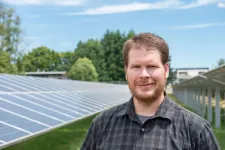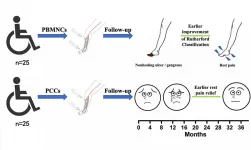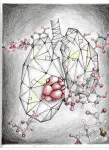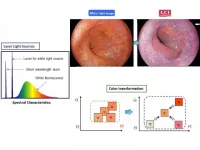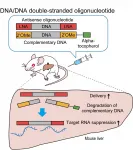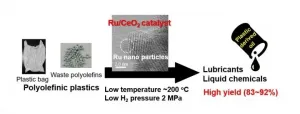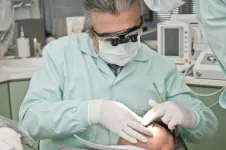(Press-News.org) CORVALLIS, Ore. - Co-developing land for both solar photovoltaic power and agriculture could provide 20% of total electricity generation in the United States with an investment of less than 1% of the annual U.S. budget, a new paper by Oregon State University researchers found.
Wide-scale installation of agrivoltaic systems could lead to an annual reduction of 330,000 tons of carbon dioxide emissions in the U.S - the equivalent of 75,000 cars off the road per year - and the creation of more than 100,000 jobs in rural communities, while minimally impacting crop yield, the researchers say.
"Agrivoltaics provide a rare chance for true synergy: more food, more energy, lower water demand, lower carbon emissions, and more prosperous rural communities," said Chad Higgins, an associate professor in Oregon State's College of Agricultural Sciences and the senior author of the paper published in the journal Sustainability.
Agrivoltaics also align with the goals of the Green New Deal, a package of federal legislation that seeks to address climate change and economic inequalities, Higgins said.
"Rural America, agriculture in particular, can be the solution to many of our concerns, whether it be renewable energy, mitigating climate change impacts, sustainable food or good water resource management," Higgins said. "That connection is untapped mostly because there hasn't been sufficient investment in those communities.
"What we propose in this paper is all possible. It's technically possible. It's politically possible. And it would make money after the initial investment. That's the takeaway - that we should take a hard look at agriculture as a solution to problems rather than a cause of problems."
The analysis outlined in the paper prepares Higgins for the next phase of his agrivoltaics research, which includes the installation of a fully functional solar farm designed to prioritize agricultural activities on five acres of Oregon State's North Willamette Research and Extension Station in Aurora, Oregon, 20 miles south of Portland.
The next phase aims to demonstrate to the agricultural community and potential future funders how Higgins's findings can be applied in real world agricultural systems to encourage early adoption. Ground is expected to be broken in May 2021 with production expected to start in 2022.
In the Sustainability paper, Higgins and his co-author, Kyle Proctor, a doctoral student in his lab, find that an area about the size of Maryland would be needed for agrivoltaics to meet 20% of U.S. electricity generation. That's about 13,000 square miles, or 1% of current U.S. farmland.
The cost of the agrivoltaic arrays would be $1.12 trillion over a 35-year project life. The researchers believe that the private sector would invest in the bulk of the construction costs with the federal government contributing with rebates and other incentives.
Using money generated from the electricity the arrays produce, the researchers estimate it would take about 17 years to payback the $1.12 trillion. After the projected 35-year lifespan of the project, the researchers estimate the arrays would produce $35.7 billion in revenue.
Installation of the arrays would create the equivalent of 117,000 jobs lasting 20 years, with 40% being sustainable positions for operating and maintaining the arrays, the researchers say.
Higgins comes at this project with an eclectic background. He went through a self-described engineering degree collection phase and has published papers on everything from enzyme reaction kinetics to snow physics to turbulence theory.
The broad background came in handy one day in 2013 while he was strolling his "thinking walk path" on the Oregon State campus. He noticed greener pasture under recently installed solar arrays. Drawing on his background studying water, agriculture, renewable energy, mechanical and civil engineering, he started thinking about agrivoltaics research.
His initial research focused on the impact solar arrays had on the crops planted around them. That research, along with work by other scientists, has shown that crop yield is dependent on the type of crop, but in the end, when the value of the electricity generated by the solar panels is included, there is an economic net benefit from the agrivoltaic systems.
Looking to the future, Higgins believes the wide-scale installation of agrivoltaic systems opens the door for other technologies. The surplus energy generated by the solar arrays could be used to power electric tractors or to generate fertilizer on a farm. Inexpensive sensors could be installed on the solar panel platforms to support artificial intelligence-based decisions to improve agricultural productivity.
"Once we have infrastructure, once we have energy, we are ready to tackle so many more big problems," Higgins said.
INFORMATION:
Durham, NC - Mid-term results of the first clinical trial designed specifically to evaluate the safety and effectiveness of two cell therapies that are showing early promise in treating angiitis-induced critical limb ischemia were released today in STEM CELLS Translational Medicine. The study, by researchers at Zhongshan Hospital/Fudan University in Shanghai, compared how transplantation of peripheral blood mononuclear cells fared versus transplantation of purified CD34+ cells in treating this condition.
It revealed both therapies yielded satisfactory results and provided evidence for ...
DALLAS - Jan. 5, 2021 - Researchers at the Children's Medical Center Research Institute at UT Southwestern (CRI) have discovered a new metabolic vulnerability in a highly aggressive form of non-small cell lung cancer (NSCLC). These findings could pave the way for new treatments for patients with mutations in two key genes - KRAS and LKB1. Patients whose tumors contain both of these mutations, known as KL tumors, have poor outcomes and usually do not respond to immunotherapy.
"We used to think that most tumors rely on the same handful of metabolic pathways to grow, but we've learned over the last decade that this is an oversimplification. Instead, different tumor subclasses have particular metabolic needs arising from mutations ...
Trio of articles suggest that a single dose of vaccine, even if less effective than two doses, may have greater population benefit.
Three articles published today in Annals of Internal Medicine discuss the most effective vaccination strategy for maximum impact against the COVID-19 pandemic. The articles are accompanied by an editorial from Thomas J. Bollyky, JD, Director of Global Health Program, Council on Foreign Relations. Mr. Bollyky can be reached through Lauran Potter at lpotter@cfr.org. The full text of his editorial is available here: https://www.acpjournals.org/doi/10.7326/M20-8280.
Speed Versus Efficacy: Quantifying Potential Tradeoffs in COVID-19 Vaccine Deployment https://www.acpjournals.org/doi/10.7326/M20-7866.
Researchers from Yale School of Public ...
The combination of ibrutinib plus rituximab is approved for the treatment of adults with previously untreated chronic lymphocytic leukaemia (CLL). In an early benefit assessment, the German Institute for Quality and Efficiency in Health Care (IQWiG) now examined which advantages and disadvantages this drug combination has for the patients. For patients who could also be treated with the chemo-immunotherapy FCR, the assessment found an indication of a major added benefit in comparison with this appropriate comparator therapy. No study data are available for patients for whom FCR or other chemo-immunotherapy is not an option due to their poorer general health. An added benefit is therefore ...
PULLMAN, Wash. - In what may be a sign of climate-change-induced conflict, researchers have captured rare photographic evidence of a jaguar killing another predatory wild cat at an isolated waterhole in Guatemala.
In the footage, a male jaguar arrives near the waterhole and apparently lies in wait for an hour. It lets a potentially dangerous prey animal, a large tapir, pass by, but when the ocelot stops to drink, the jaguar pounces and carries off the smaller predator.
The event, detailed in a recent study published in the journal Biotropica, was captured in the Maya Biosphere Reserve in March 2019, a dry month in a drought year for the tropical forest, by wildlife ecologists from Washington State University ...
LA JOLLA--(January 5, 2021) Lithium is considered the gold standard for treating bipolar disorder (BD), but nearly 70 percent of people with BD don't respond to it. This leaves them at risk for debilitating, potentially life-threatening mood swings. Researchers at the Salk Institute have found that the culprit may lie in gene activity--or lack of it.
A new study led by Salk Professor and President Rusty Gage, which published in the journal Molecular Psychiatry on January 4, 2021, shows that decreased activation of a gene called LEF1 disrupts ordinary ...
Researchers from Tokyo Medical and Dental University (TMDU) describe an endoscopic modality for detecting upper gastrointestinal tract neoplasms by Linked Color Imaging that innovatively mixes light of different wavelengths to better depict mucosal changes
Tokyo, Japan - Recently there have been significant advances on several fronts in the ongoing war against cancer of the alimentary tract. Now, Japanese researchers report the development of another weapon: Linked Color Imaging (LCI), a novel endoscopic technique that improves detection of cancer by viewing the upper digestive tract mucosa under illumination that combines specific wavelengths of light to intensify subtle color variations indicative of neoplastic change.
Upper gastrointestinal (GI) endoscopy ...
Researchers from Tokyo Medical and Dental University (TMDU) and Ionis Pharmaceuticals, USA, report a modification wherein replacing the RNA strand of a heteroduplex oligonucleotide with DNA may enhance the efficacy of antisense oligonucleotide-based drugs
Tokyo, Japan - Antisense oligonucleotides (ASO) hold great promise for pharmacotherapy. Now, researchers at Tokyo Medical and Dental University (TMDU) and Ionis Pharmaceuticals, advancing their earlier work on a heteroduplex oligonucleotide (HDO) model, have demonstrated augmentation of ASO-based ...
For the first time, researchers have used a novel catalyst process to recycle a type of plastic found in everything from grocery bags and food packaging to toys and electronics into liquid fuels and wax.
The team published their results on Dec. 10 in Applied Catalysis B: Environmental.
"Plastics are essential materials for our life because they bring safety and hygiene to our society," said paper co-authors Masazumi Tamura, associate professor in the Research Center for Artificial Photosynthesis in the Advanced Research Institute for Natural Science and Technology in Osaka City University, and Keiichi Tomishige, professor in the Graduate School of Engineering in Tohoku University. "However, the growth of the global ...
An imbalance of the body's oxygen producing free radicals and its antioxidant cells could be the reason why gum disease and chronic kidney disease affect each other, a new study led by the University of Birmingham has found.
Periodontitis - or gum disease - is a common, inflammatory disease which causes bleeding gums, wobbly or drifting teeth and can eventually result in tooth loss.
Previous studies have shown a link between the severe oral inflammation caused by gum disease and chronic kidney disease (CKD) which demonstrated that those with worse inflammation of the gums have worse kidney function.
Previous research also showed that patients with CKD and periodontitis experience ...
